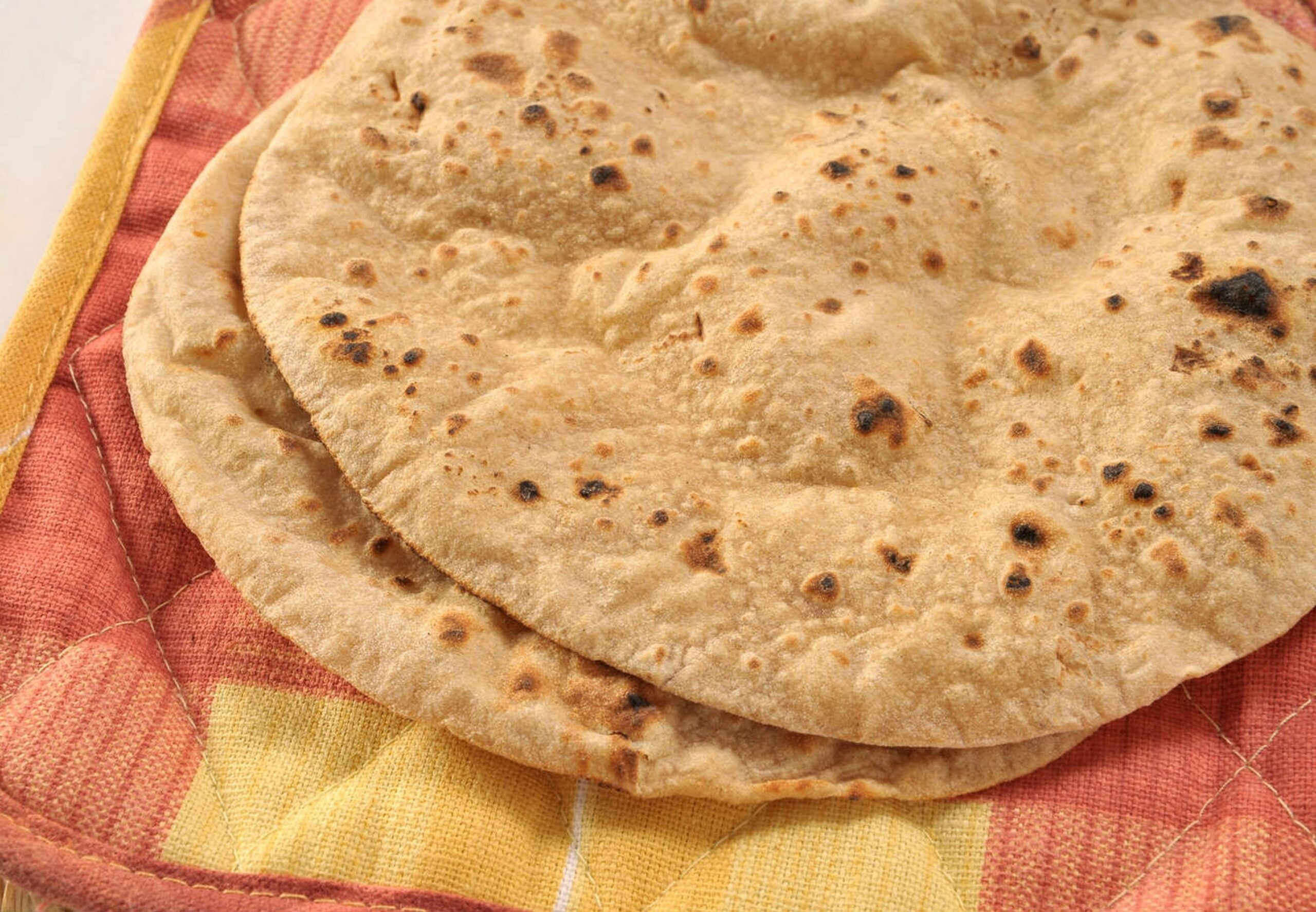Fortunately, gluten free roti allows everyone to enjoy roti’s delicious flavor and texture without sacrificing their health.
Traditionally prepared from wheat flour, roti is a mainstay in many South Asian cuisines. However, it can be difficult for people with celiac disease or gluten sensitivity to enjoy this popular flatbread.
Ingredients
1 cup of your chosen gluten-free flour (or a blend)
1/4 teaspoon salt
Water (as needed)
1 tablespoon olive oil or ghee (optional)
Gluten Free Roti
Making the Dough
Although making the gluten free roti dough is simple, it does require some attention to detail:
Put the salt and the flour of your choice in a mixing bowl.
As you mix, gradually add water until a soft dough develops. The type of flour used may affect how much water is needed.
You can enrich the dough with ghee or olive oil if you’d like.
For two to three minutes, gently knead the dough until it is smooth and flexible.
Let the dough rest for at least 15 to 20 minutes after covering it with a moist cloth. This resting time increases the flour’s flexibility and helps hydrate it.
Rolling the Roti Out
It’s time to roll out your rotis when the dough has rested:
Make equal bits of the dough, each about the size of a golf ball.
To keep it from sticking, lightly dust your work surface with more gluten-free flour.
Place one piece of dough on the floured surface after flattening it between your palms.
Gently lay out the dough with a rolling pin into a circle that is 6 to 8 inches across. Try to keep the thickness constant throughout.
Simply pinch the edges back together if they crack during rolling; this is common for gluten-free dough.
Cooking the Roti
It’s important to pay close attention when cooking gluten free roti to make sure they cook thoroughly without burning:
Heat a tawa or nonstick skillet to a medium temperature.
Put your rolled-out roti onto the griddle once it’s hot.
Cook until tiny bubbles start to appear on the surface, about 30 seconds.
Using a spatula or tongs, flip the roti and cook for a further 30 seconds.
Using a clean cloth or spatula, gently press down on the edges to give the roti a more realistic touch.
If necessary, flip again until golden-brown specks appear on both sides.
While cooking the other rotis, take off the heat and keep warm in a closed container.
See also: Pumpkin Asian
Tips for Perfect Gluten Free Roti
Consider the following advice to guarantee that your gluten-free roti always comes out perfectly:
Try other flour blends: Texture and flavor can be enhanced by combining several kinds of gluten-free flours.
Employ warm water instead of cold water to better hydrate the flours.
Steer clear of overkneading: Gluten-free dough doesn’t need to be kneaded as much as regular dough; doing so can result in rough rotis.
Properly store: Remaining rotis can be frozen for extended storage or kept in an airtight container at room temperature for up to two days.
Make It Taste Better
Even while basic gluten-free roti tastes great by itself, you might want to add certain flavorings to make your dish even better:
Spices and Herbs
You can enhance the flavor profile of your roti by adding spices like cumin or herbs like cilantro. Before adding water, simply stir your flour with ground spices or finely chopped herbs.
Infusion of Garlic
For those who enjoy garlic, adding powdered or chopped garlic to your dough can offer a burst of flavor that goes well with savory foods.
Flakes of chilli
For added zing, add chili powder or flakes to the dough mixture if you like your food spicy.
Serving Recommendations
Gluten-free roti goes well with a variety of foods:
Serve it with flavorful curries like palak paneer or chickpea masala.
Use it as a wrap for spicy meats or grilled veggies.
For a genuine experience, eat it with pickles or yogurt.
Stuff rotis with lentils or spicy potatoes to make mouthwatering sandwiches.
To produce distinctive versions that suit your palette, feel free to experiment with different flours and spices!
Benefits of Gluten Free Roti for Nutrition
In addition to meeting dietary requirements, making gluten-free roti has other nutritional advantages:
Elevated Fiber Content
Consuming more fiber from whole grain flours, such as sorghum or chickpea, improves digestion and intestinal health in general.
High in Protein
Chickpea flour is a great option for people who want to boost their protein intake without consuming gluten because it is especially high in protein when compared to regular wheat flour.
Options with a Low Glycemic Index
Because they have a lower glycemic index than wheat flour, some gluten-free flours can help regulate blood sugar levels, which is advantageous for diabetics.
Common Errors to Steer Clear of
You should be mindful of the following typical mistakes when cooking gluten-free roti:
Not Taking a Break
Rotis that are tough and don’t roll out smoothly can be the result of not letting your dough rest. It’s important to give yourself time to stay hydrated!
Excessive Water Use
Your dough may become sticky and challenging to work with if you add too much water. Add extra water as needed, starting with less.
Rotis overcooked
Aim for just enough time on each side until the rotis are lightly browned but still tender, as overcooking them can result in dryness and harshness.
In conclusion
It is not only feasible but also fun to make gluten free roti at home! Everyone, regardless of dietary limitations, can enjoy these delectable flatbreads made with a few basic ingredients and methods.

